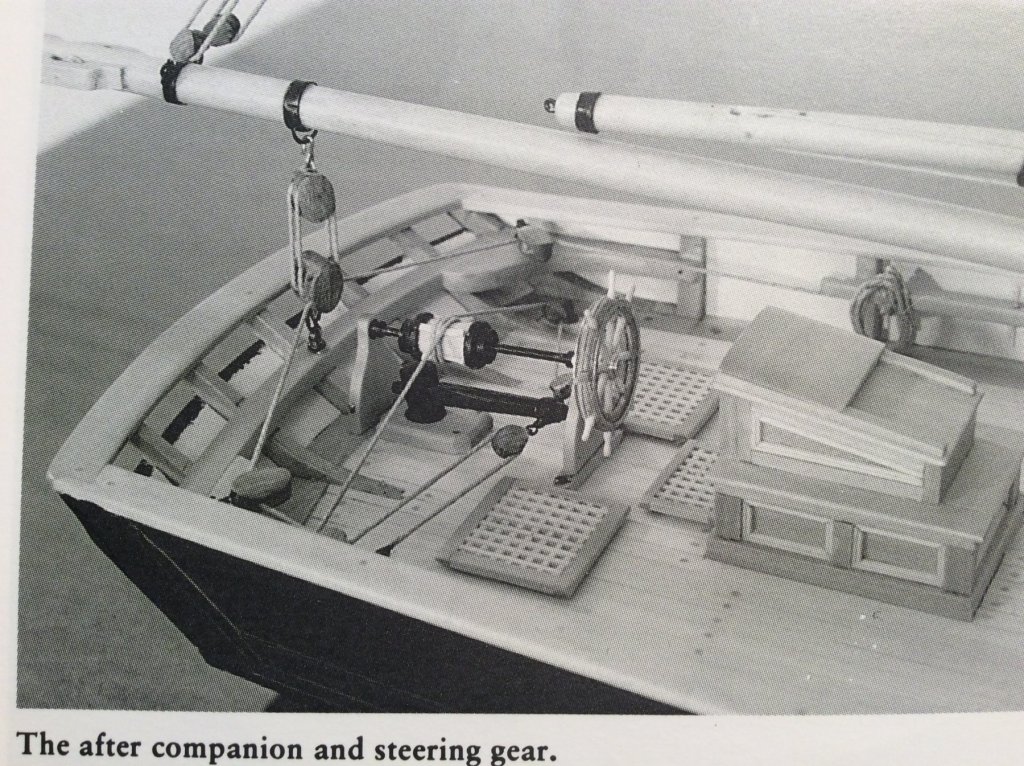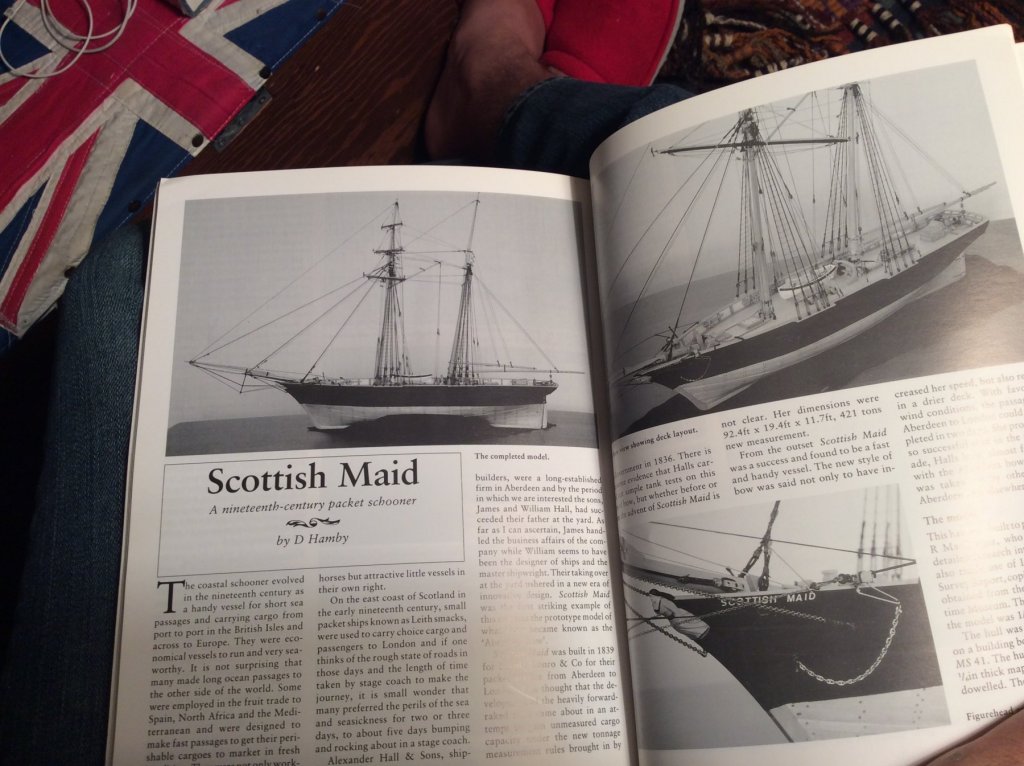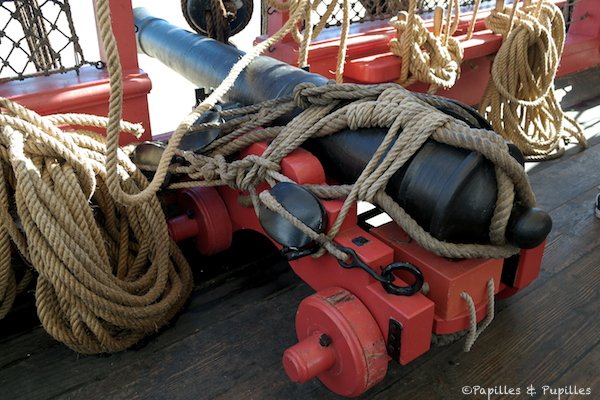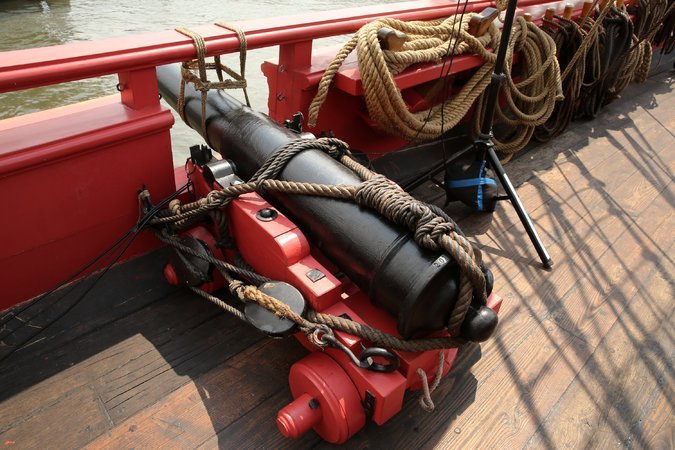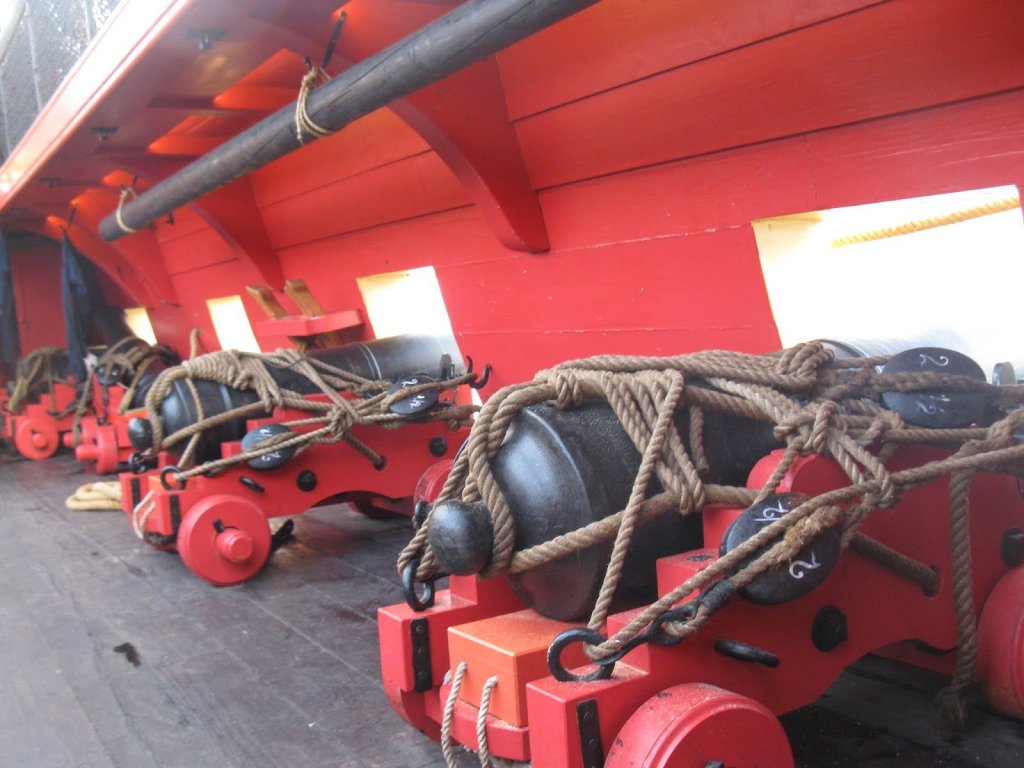
JerseyCity Frankie
Members-
Posts
1,338 -
Joined
-
Last visited
Content Type
Profiles
Forums
Gallery
Events
Everything posted by JerseyCity Frankie
-
This whole issue brings to light, for me, the need for some NEW options for model rigging. lee’s Masting and rigging of English ships of war is always going to be timeless and essential. But it’s limited to three masted Square Rigged ship rigs. when when you look around for books that cover other rigs, you can’t find much of a similar quality and certainly not between two covers. That’s why I find Petersson’s nonsense so tragic. Doubly tragic since there IS accurate material available and existing traditionally rigged vessels in every ocean that Petersson could have looked at but instead he chose to base his work exclusively on those three unidentified models.
-
That’s the rub. You won’t find an equivalent book with clear illustrations of each bit of rigging for ships that are the subject of the disputed book. Which is sad. The next best option would technically be Howard Chapelle’s The American Fishing Schooner but he doesn’t deal with topsails nor does he illustrate the individual lines AND his book is more expensive -but still worth owning. It’s odd that there isn’t a better book on the subject of schooners Lugers and cutters, all between two covers. Maybe one day Petersson will re-edit his book to remove all its problems?
-
I’m sure you don’t want to hear this, and it pains me to have to tell you, but Petersson’s Book is a trainwreck. It’s FULL of wrong information. He based his “research” on three unnamed individual models, aparently tracing the run of each line and providing each with its own clearly drawn illustration. A great idea! Unfortunately either he or the model builder or both have made errors almost too numerable to count. Almost every page of his book has at least one error in it, small or large. Usually the errors are concerned with the lead of multiple part tackles, stuff like Spanish Burtens. Often the problems are simple matters of where the hauling end emerges from otherwise OK gear, but surprisingly often the rigging he’s illustrated couldn’t function properly at all as drawn. Which is amazing considering he’s describing it as a book on rigging. And many here tout his work as useful and valuable. I’m saying it does more harm than good due to the huge numbers of inaccuracies. The fact that he’s reached so many people with so much bad information is, in my opinion, bad for the entire hobby.
-
Look at the bright side: by the time you’ve checked the Veracity of all the lines on your Artisana Latina plans, you will be an expert on schooner rigging! And the other good news is that there are a LOT of schooners very similar to the subject of your model, still at sea and photographed every day. The documentation is available if you’re willing to dig for it.
-
Scottish Maid rigging pt2 - spanker sheets.
JerseyCity Frankie replied to gthursby's topic in Masting, rigging and sails
The lead foil from a wine bottle cork covering has the advantage of actually being metal and it’s super easy to work with. Of late you only get the lead foil on more expensive wine though. -
Scottish Maid rigging pt2 - spanker sheets.
JerseyCity Frankie replied to gthursby's topic in Masting, rigging and sails
I was just flipping though an issue of Model ShipwrightMagazine, #94, and there is an artical about Scottish Maid with photos. -
Check out my build log I’m ALSO building Constitution and I’m currently at the same point in my build. You could also look at my HMS Victory build log for a slightly less complex method. Each involves stiffening the fabric and forcing it into the shape of a sail full of ind and bellied out.
-
When furled, The Clew would draw that whole corner inboard and up against the Spritsail Yard, taking the Sheet with it. Now you have a lead along the Bowsprit, at least as far as it can go back to the deck, depending on where the Sheets belay. With the sail furled the only concern would be to have the Sheet out of the way and out of the water. I could imagine the crew hitching the Sheet onto the Bowsprit at one or two places to keep it out of their way as they go out on the headrig.
-
The tackle you are calling “the bracers” is clearly going to run, meaning the lines can be hauled tighter or eased looser, they are not “seized at both ends” if by “seized” you mean that they are fixed and unmovable. I’m not impressed with the plan they gave you but this plan does show tackle, and the tackle will have a hauling end. i took a quick look at some references I have and all show the tackle at the forward end of the spar (R-11) but none show the unidentified line in your plan at the after end of the spar, which I doubt the veracity of. I think whoever drew the plan invented this line out of thin air, but I could be wrong. The square yards above the lateen yard look fine to me, they are not “seized” in any unusual way, they appear to have the usual Lifts Braces and hailyards but I will say the Halyard labeled 71 was drawn sloppily as it should be fixed to the center of the yard, not off to one side as shown. Get the R C Anderson book I linked to above, it will augment the poor drawing the manufacturer provided you with. The book is one of the very least expensive yet very worthwhile ship model books and it directly addresses your time frame.
-
Congratulations on moving the lead of the lifts to the front of the cap. One of my (many) pet peaves on models is when the builders run the lifts through the Topmast shrouds, which you see ALL THE TIME even in museum collections.
-
Astonishingly beautiful rigging work, really amazing!
- 3,618 replies
-
- young america
- clipper
-
(and 1 more)
Tagged with:
-
Good time to start a Constitution model, the 21st of October is the ships 220th birthday. Welcome to what is either the first or second most popular ship model subject in the entire hobby? Anyway she’s neck and neck with the HMS Victory. A very worthy subject!
- 3 replies
-
- constitution
- revell
-
(and 2 more)
Tagged with:
-
Scootish Maid rigging problems - gaff and boom
JerseyCity Frankie replied to gthursby's topic in Masting, rigging and sails
Looks legit to me. I too was surprised to see single boom topping lifts on the famous Spray, Joshua Slocum’s circumnavigation vessel. I’d be much happier with two myself but the single Lift arrangement on Spray is visible in period photos of her. The location of the blocks on the Gaff is also correct, this is how it nearly always looks. Although larger or smaller vessels will be seen to have a different number of peak Halyard blocks making up their tackle. In my experience the two halyards on the Gaff always belay outboard on pins on or near the bulwarks, always on opposite sides from each other AND nearly always the Peak Halyard is to Starboard and the Throat Halyard is to Port. “The Port wine goes down your Throat” is the mnemonic device used to remember. Since it takes three men or more on each Halyard, and the two halyards are raised at the same time, they are belayed on either sideof the deck so the six men (or more) are not all tangled together in one place. On larger Fore and aft vessels, the halyards on the Main could go to a fiferail at the base of the mast, but the port and Starboard rule still applies. These halyards will be the thickest lines on the pinrails on this part of the vessel, all other lines on the nearby pins will be visibly smaller and thinner rope as these halyards are taking the most strain ( unless your vessel has a drop keel, then the centerboard pennant will be the thickest line). The only thicker lines on the whole vessel would be the sheets. -
When you consider how heavy the weapons are and then consider that the cambered deck rolls port and starboard and back all day every day while you are at sea, and your cannon are on wheels, you begin to appreciate that the training tackle alone would not be a safe method to secure a set of between six and 120 guns. I’ve found a bunch of photos like these of guns on the deck of the Le Hermione replica frigate. There are man6 other photos like these. She’s crossed the Atlantic twice with period correct equipment, her cannon are the proper size and weight. As you can see the crew have put a lot of effort into assuring the guns remain stationary.
-
General guide to how rigging works.
JerseyCity Frankie replied to gthursby's topic in Masting, rigging and sails
It may be easier if you name the lines that confuse you and then we can go through them one by one. I love talking about rigging so don’t worry about people not replying to your questions. I can’t think of any films that go into particulars of how rigging works but there are certainly youtube videos. -
HMAV Bounty: Gaff-Boom Rigging?
JerseyCity Frankie replied to DonnRW's topic in Masting, rigging and sails
Click on that link in my post above there are dozens of photos. -
HMAV Bounty: Gaff-Boom Rigging?
JerseyCity Frankie replied to DonnRW's topic in Masting, rigging and sails
Here is a nice collection of photos of what looks to me to be a very good model of Bounty: http://www.modelships.de/Bounty_II/Photos_Bounty_II_details.htm. I pulled this photo from the set. -
Split Brass Ring Frustrations
JerseyCity Frankie replied to David Lester's topic in Masting, rigging and sails
I'm having difficulty picturing where lines would be made off to or, run through, ANY rings of any sort on a ship. Certainly a lot of lines originate at a ringbolt-for instance on the bulwarks for the cannon tackle-but those are all eyebolts. -
The fid is sufficient to take the weight of the entire rig above the partners! It seams impossible but this is the mechanism that does all the work of holding that load. once the fid is put in place, the weight of the Topmast is settled onto it by easing the top rope and from this point on you don't need the toprope in the rig, its performing no function. In fact, if you leave the toprope in place, it only suffers weathering and deterioration. Topropes are carefully labeled and carefully stored and they are never allowed to be used for any other jobs onboard, the point being that all possible measures are taken to make sure this line will never be weakened or compromised. Few lines in the rig are as crucial when they are in use. A toprope that parts can cause the sinking of the ship when the Topmast arrows down through the deck like a giant battering ram.
-
HMAV Bounty: Gaff-Boom Rigging?
JerseyCity Frankie replied to DonnRW's topic in Masting, rigging and sails
The Gaff is the upper spar, the boom is the lower one. The gaff has two hailyards: one at the "throat" ( parallel and within inches of the mast) which is hard to see on plans sometimes, which has one block right on the Jaws and one under the top. Plus it has a more complex zigzagging Halyard called the "Peak" and this one features two blocks farther out on the Gaff itself and two more on the after side of the masthead, with one long hailyard running through all the blocks. Often a Gaff will have a pair of Vangs, one on each side, which control how far out to each side the Gaff can swing. But many vessels omitt the Vangs. the boom has at the very least a Sheet, which controls how far out it can swing port or starboard. It's likely to have a Lift of some kind to keep it from laying directly on the deck. -
the problem with using a block as a means of deflecting the angle of a stay down to the deck, or wherever, is that the pin for the sheve is taking the entire load and is the weak point that will break. The sheave doesn't need to be free to turn once the stay is set up so a thimble is a better solution: no moving parts and the entire fabric of the thimble is taking the load.
-
It occurs to me know to wonder where the name "spencer" comes from. Likely the name of an individual. Names of individuals have only very occasionally worked their way into the lexicon. Charlie Noble, Mathew Walker, Plimsoll Mark, I can't think of any more but feel they are out there....
- 3,618 replies
-
- young america
- clipper
-
(and 1 more)
Tagged with:
-
It may be more critical to concern yourself with where their outer ends are located in space in regards to the rest of the headrig and the lead of the Fore tacks.
About us
Modelshipworld - Advancing Ship Modeling through Research
SSL Secured
Your security is important for us so this Website is SSL-Secured
NRG Mailing Address
Nautical Research Guild
237 South Lincoln Street
Westmont IL, 60559-1917
Model Ship World ® and the MSW logo are Registered Trademarks, and belong to the Nautical Research Guild (United States Patent and Trademark Office: No. 6,929,264 & No. 6,929,274, registered Dec. 20, 2022)
Helpful Links
About the NRG
If you enjoy building ship models that are historically accurate as well as beautiful, then The Nautical Research Guild (NRG) is just right for you.
The Guild is a non-profit educational organization whose mission is to “Advance Ship Modeling Through Research”. We provide support to our members in their efforts to raise the quality of their model ships.
The Nautical Research Guild has published our world-renowned quarterly magazine, The Nautical Research Journal, since 1955. The pages of the Journal are full of articles by accomplished ship modelers who show you how they create those exquisite details on their models, and by maritime historians who show you the correct details to build. The Journal is available in both print and digital editions. Go to the NRG web site (www.thenrg.org) to download a complimentary digital copy of the Journal. The NRG also publishes plan sets, books and compilations of back issues of the Journal and the former Ships in Scale and Model Ship Builder magazines.


